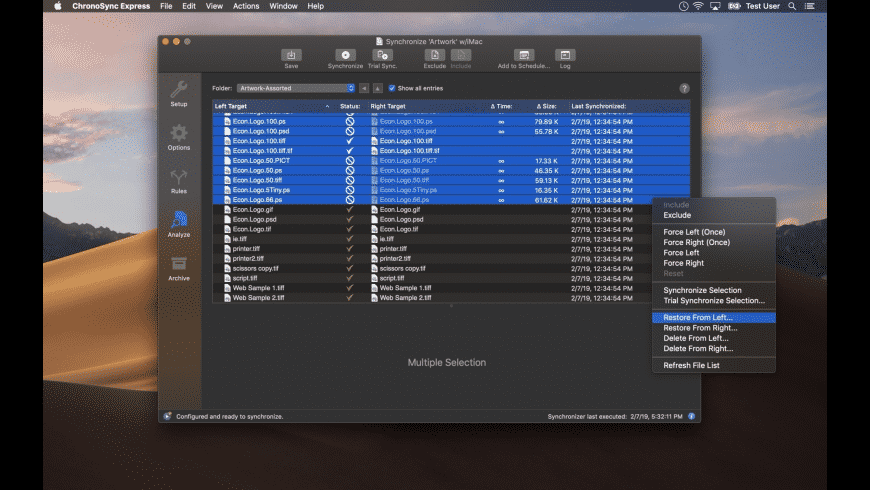
Let’s say you now delete another 1 GB file and change 3 GB of data in other documents. After that, all changes are required by two snapshots, the original and the new one. This gets more complicated when you make the next snapshot.
#CHRONOSYNC UNINSTALL MAC PLUS#
At the end of that, the snapshot’s effective size is the original MB used for the file system itself, plus 3 GB, which can’t be deleted until that snapshot itself is deleted. For example, let’s say that after you’ve made a snapshot of a volume, you delete one 1 GB file, and change another 2 GB of data in other documents. What happens from the instant that snapshot is made is that all file data which would otherwise be deleted, either because the file itself is deleted or because it has changed when editing that file, is retained instead of being returned for re-use. Without that, you couldn’t revert the volume to its previous state, or restore a file which has since been deleted. However, to be of any use, snapshots also need data.

This article explains how they can go wrong, and what you can do to manage them so they don’t swallow all the free space on your storage.Īt its heart, a snapshot is itself very small: it’s simply a saved copy of the file system of the APFS volume at the instant the snapshot was made, a few MB, not GB.

Snapshots are one of the huge advances in APFS, but like other features, they can cause more problems than they’re worth.


 0 kommentar(er)
0 kommentar(er)
